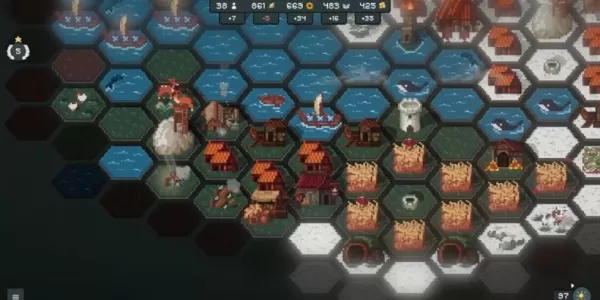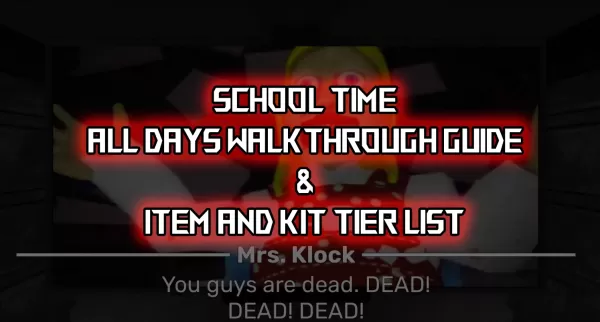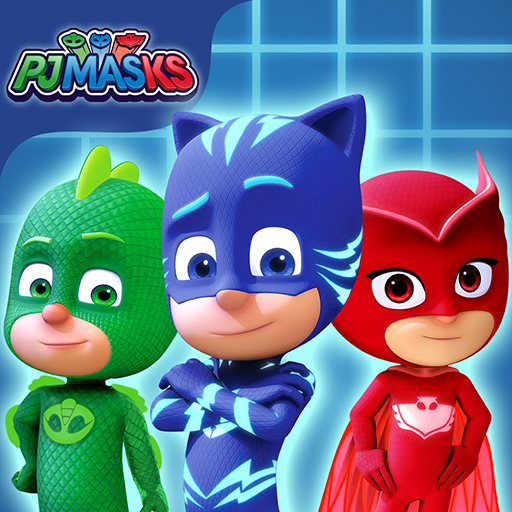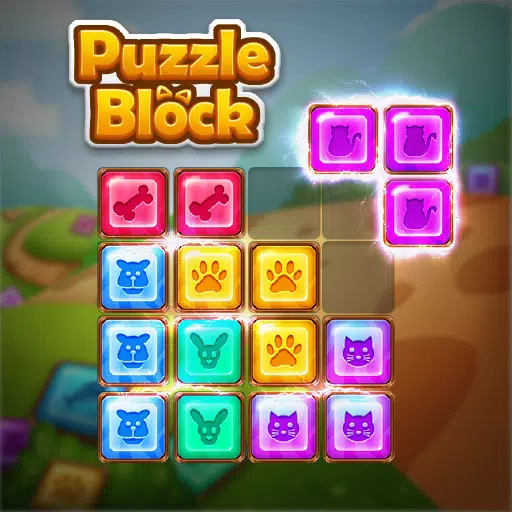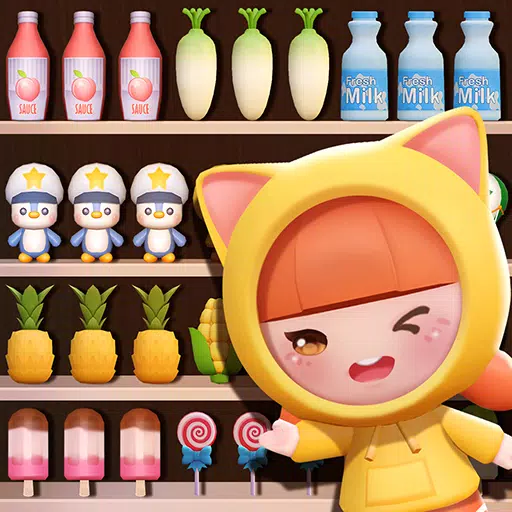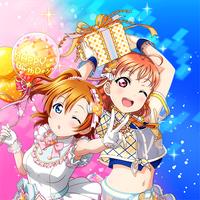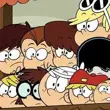Astro Bot fans are likely familiar with the iconic sponge power-up, but did you know that developer Team Asobi also experimented with even more whimsical abilities? During GDC 2025, IGN had the opportunity to attend a talk by Team Asobi's studio director, Nicolas Doucet, titled "The Making of 'ASTRO BOT'". In this presentation, Doucet delved deep into the creative process behind the PlayStation mascot platformer, showcasing numerous early prototype images and discussing content that didn't make the final cut.
Doucet kicked off his talk by discussing the initial pitch for Astro Bot, which was crafted in May 2021, shortly after Team Asobi began its prototyping phase. He revealed that the pitch underwent a whopping 23 revisions before being presented to top management. The initial pitch was uniquely presented as an adorable comic strip that highlighted the game's main pillars and activities, a strategy that evidently paid off.
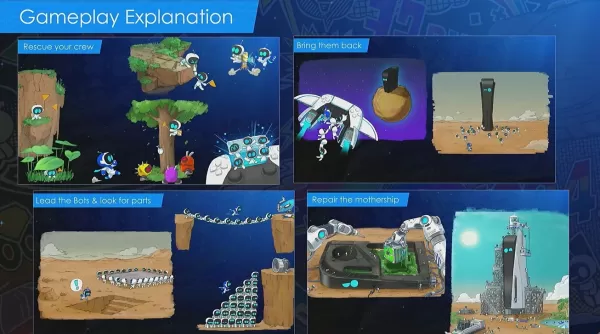 A slide from Nicholas Doucet's GDC talk, The Making of 'ASTRO BOT', showing a comic book explanation of the game's pitch.Doucet then shared insights into the team's idea generation process, which relied heavily on brainstorming. Team Asobi formed small, interdisciplinary groups of 5-6 people who contributed ideas via individual sticky notes, leading to an impressive brainstorming board.
A slide from Nicholas Doucet's GDC talk, The Making of 'ASTRO BOT', showing a comic book explanation of the game's pitch.Doucet then shared insights into the team's idea generation process, which relied heavily on brainstorming. Team Asobi formed small, interdisciplinary groups of 5-6 people who contributed ideas via individual sticky notes, leading to an impressive brainstorming board.
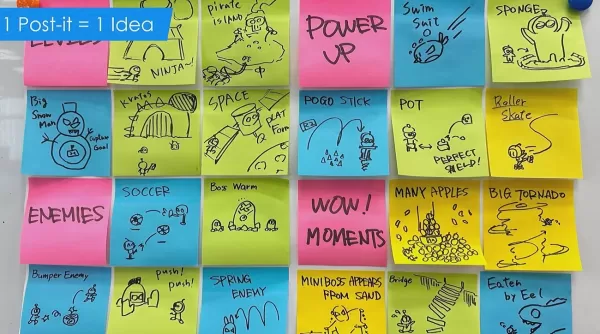 Another slide from the talk, showing sticky note brainstorms from Team Asobi.While not all ideas progressed to prototyping, Doucet noted that about 10% of the brainstormed concepts were developed into prototypes. He emphasized the importance of prototyping across all departments, even those outside traditional game design. For instance, audio designers created a theater within Astro Bot to experiment with haptic controller vibrations that matched various sound effects, such as different door movements.
Another slide from the talk, showing sticky note brainstorms from Team Asobi.While not all ideas progressed to prototyping, Doucet noted that about 10% of the brainstormed concepts were developed into prototypes. He emphasized the importance of prototyping across all departments, even those outside traditional game design. For instance, audio designers created a theater within Astro Bot to experiment with haptic controller vibrations that matched various sound effects, such as different door movements.
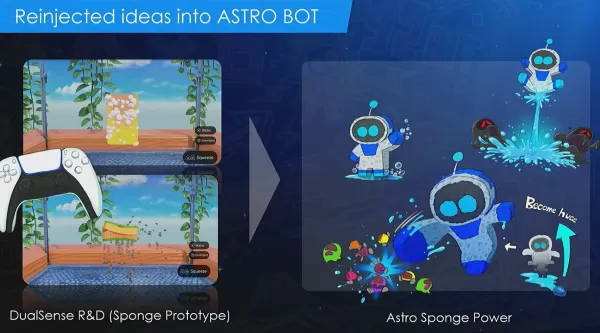 Another slide from the talk, showing a sponge prototype alongside concept art of Astro Bot becoming a sponge.The dedication to prototyping was so strong that some programmers were specifically assigned to explore non-platforming concepts. This led to the creation of Astro Bot's sponge mechanic, which used the adaptive trigger for a squeezing effect and was ultimately incorporated into the game.
Another slide from the talk, showing a sponge prototype alongside concept art of Astro Bot becoming a sponge.The dedication to prototyping was so strong that some programmers were specifically assigned to explore non-platforming concepts. This led to the creation of Astro Bot's sponge mechanic, which used the adaptive trigger for a squeezing effect and was ultimately incorporated into the game.
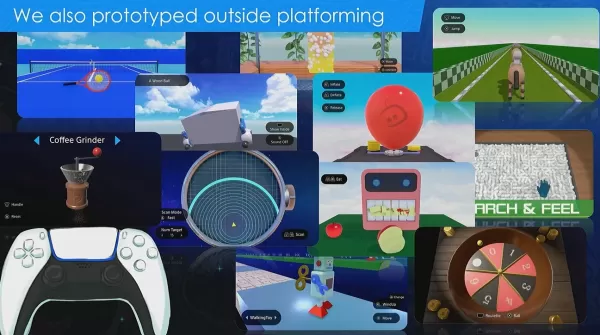 Another slide from the talk showing various prototype activities that were made for Astro Bot.Doucet showcased an image featuring a range of prototypes, including the successful balloon and sponge mechanics, as well as more experimental ideas like a tennis game, a wind-up toy, a roulette wheel, and a coffee grinder.
Another slide from the talk showing various prototype activities that were made for Astro Bot.Doucet showcased an image featuring a range of prototypes, including the successful balloon and sponge mechanics, as well as more experimental ideas like a tennis game, a wind-up toy, a roulette wheel, and a coffee grinder.
In discussing level design, Doucet explained that each level was crafted to offer unique gameplay experiences, avoiding redundancy. While certain power-ups could be reused, their implementation needed to be distinct enough to maintain level variety. He cited an example of a cut level themed around bird flights, which was scrapped due to similarities with existing levels that utilized the monkey power-up.
"In the end, it was decided that the overlap was not healthy enough to create variety, and we just cut this level entirely," he said. "We'll never know if that level would have been popular. But in hindsight, I think it's a good thing that we got to spend that time elsewhere."
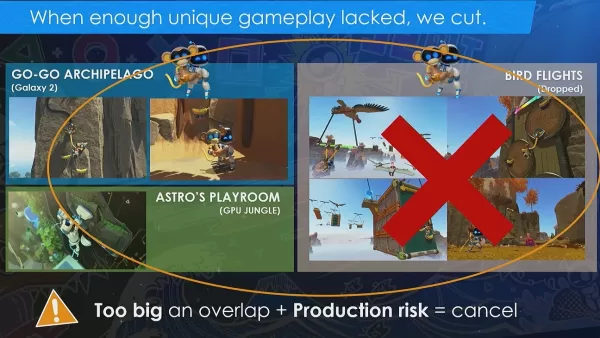 Another slide, showing a cut level from Astro Bot alongside two other implemented levels.Doucet concluded his talk by discussing the game's final scene, which includes Spoilers for those who haven't completed Astro Bot yet. In the original concept, players were presented with a completely dismembered Astro, which caused some discomfort among testers. The final version opted for a more intact Astro, easing player concerns.
Another slide, showing a cut level from Astro Bot alongside two other implemented levels.Doucet concluded his talk by discussing the game's final scene, which includes Spoilers for those who haven't completed Astro Bot yet. In the original concept, players were presented with a completely dismembered Astro, which caused some discomfort among testers. The final version opted for a more intact Astro, easing player concerns.
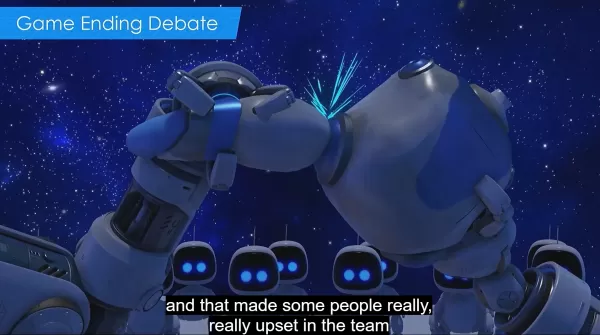 A clip from Doucet's presentation showing the original ending of Astro Bot.Doucet's presentation was rich with insights into the development of Astro Bot, a game that IGN awarded a 9/10, describing it as "A fantastically inventive platformer in its own right, Astro Bot is particularly special for anyone with a place in their heart for PlayStation."
A clip from Doucet's presentation showing the original ending of Astro Bot.Doucet's presentation was rich with insights into the development of Astro Bot, a game that IGN awarded a 9/10, describing it as "A fantastically inventive platformer in its own right, Astro Bot is particularly special for anyone with a place in their heart for PlayStation."

